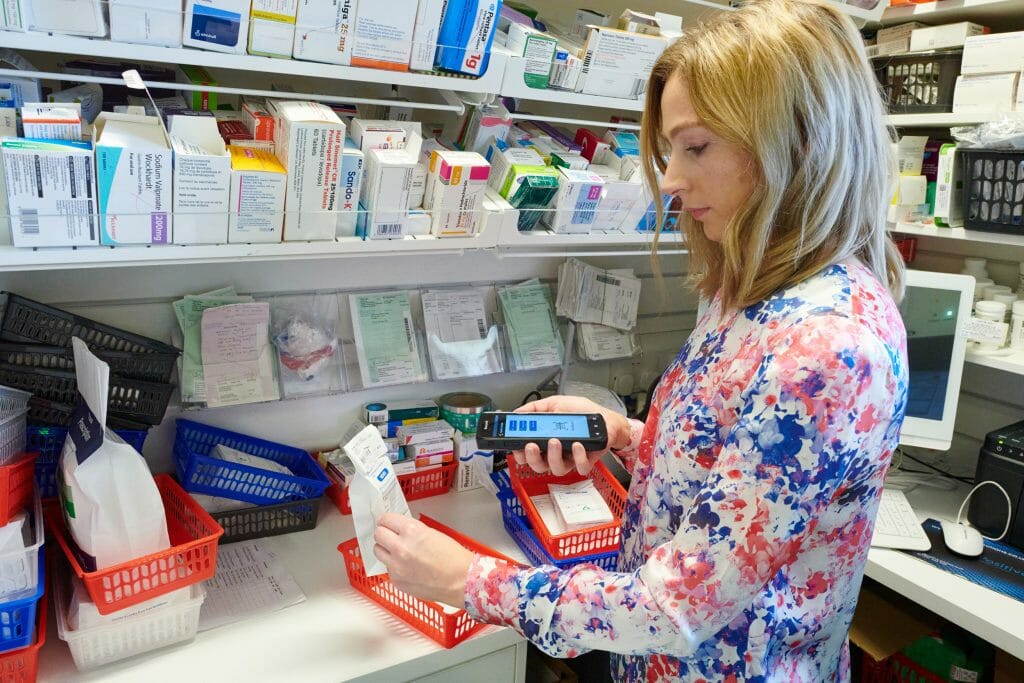Blog
Navigating the Prescription for Success: Pharmacy Automation Amidst NHS Funding Cuts
In the intricate tapestry of healthcare, pharmacies serve as vital threads, weaving together patient well-being and community health. However, the chronic situation of reduced NHS funding, particularly in England, is now having a very tangible impact on these indispensable institutions.
As pharmacies grapple with the most recent cash flow issues, in this blog, we explore why investing in automation is not just a pragmatic solution but a strategic imperative for pharmacies facing the crunch of reduced funding.
The Fiscal Tightrope: Understanding the NHS Funding Conundrum
Pharmacies find themselves facing yet another cash-flow squeeze due to an unexpected clawback of £23 million from category M of the drug tariff. This is estimated to cost pharmacies £600 to £1,100 on average in terms of margin and up to £3,000 in terms of turnover.
Coming on the back of many years of underfunding and exceptional inflationary pressures, this is terrible timing and will put enormous pressure on the cash flow of many pharmacies forcing many to consider reducing opening hours or even closing.
There is no real clarity on how the additional £645m funding trumpeted back in May will be allocated so, with no light at the end of the tunnel, pharmacies are understandably in survival mode, compelled to do more with less.
Amidst rising staff costs, the strain on traditional operational models becomes increasingly palpable. The challenge is not just financial; it’s about preserving the quality of patient care and retention of trained staff in increasingly stressful working environments.
It has taken several years to get to this point but, reduced funding has created a domino effect—staff shortages, increased workloads, and the potential compromise of patient care.
Beyond Cost-Cutting: The True Value of Automation
In the face of financial adversity and future funding uncertainty, it is a completely natural reaction to look at cutting certain longer-term investments, but the pharmacies that thrive are the ones that look to innovation for salvation in the short term.
Automating collection of prescriptions can have an immediate impact and offers a lifeline to pharmacies seeking to maintain and enhance their services. It can present an opportunity to alleviate the burden on pharmacy staff, streamline processes, and enhance accuracy.
At first glance, investing in automation might seem like an additional financial burden. However, it’s a classic case of short-term pain for medium & long-term gain. The relatively low upfront costs of automating prescription collection are quickly outweighed by the potential benefits.
Pharmacists and their teams are freed from mundane tasks, they can redirect their focus toward patient care. This will be critical for pharmacies in England accessing the additional funding focussed on the new Pharmacy First service and hypertension case finding, all of which rely heavily on non-pharmacist staff.
In the case of automated collection systems like MedPoint, this is the reason there are a disproportionate number installed in Scotland, where Pharmacy First and its predecessor Minor Ailments Service have been a key part of pharmacy funding for years.
Overcoming Challenges and Building a Future-Ready Pharmacy
The path to pharmacy automation is not without challenges. There may be resistance from staff, concerns about job security, and the need for comprehensive training.
However, these challenges should be seen as temporary roadblocks on the journey toward a more resilient and future-ready pharmacy model. Comprehensive training and clear communication about the benefits of automation can mitigate these challenges.
Conclusion: A Prescription for Thriving Pharmacies
In the face of reduced NHS funding, pharmacies must not succumb to the false economy of cutting investment. Instead, they should view automation as a strategic investment—a prescription for not just surviving but thriving.
By embracing automation, pharmacies can navigate the financial tightrope, ensuring the continued delivery of high-quality patient care and securing their role as indispensable healthcare providers in the community.
The path to success lies not in austerity but in the intelligent and forward-thinking embrace of innovation.
Ready to invest in automation?
Get in touch with our team to find out how a MedPoint 24/7 prescription collection system could benefit your pharmacy.
Save time and resource
Automating prescription collections allows pharmacy staff to spend less time retrieving dispensed prescriptions and reduce patient waiting times.
Increase your market share
Get ahead of the curve and attract new patients by being the first in your area to offer 24/7 prescription collection
